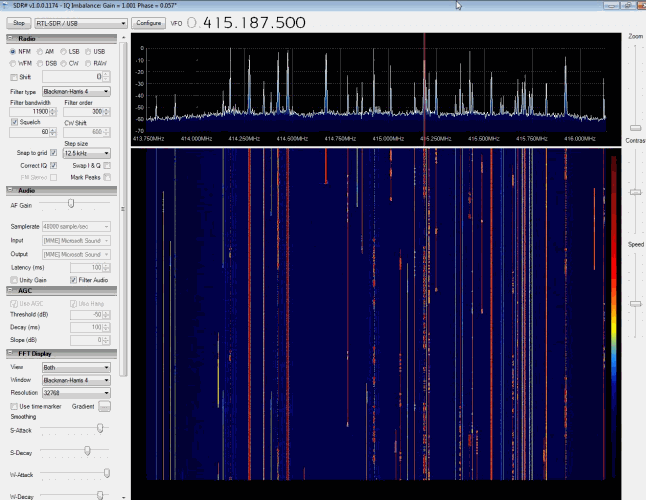In today's competitive business landscape, the role of an SDR (Sales Development Representative) has become increasingly vital for companies aiming to grow their revenue and expand their customer base. SDRs act as the bridge between marketing and sales, ensuring that leads are effectively nurtured and converted into paying customers. Understanding the responsibilities, skills, and strategies associated with this role is crucial for businesses looking to optimize their sales processes.
As businesses continue to adopt digital tools and strategies, the SDR role has evolved to incorporate data-driven techniques and advanced technologies. This transformation has made SDRs more efficient and effective in generating qualified leads. In this article, we will explore the significance of SDRs, their responsibilities, and how they contribute to the success of a company's sales efforts.
Whether you're a business owner, sales professional, or someone interested in pursuing a career as an SDR, this comprehensive guide will provide you with all the information you need to understand the role and its impact on modern sales strategies. Let's dive in and discover what makes SDRs indispensable in today's sales environment.
Read also:Today Movie Rulz 2025 Your Ultimate Guide To Streaming Movies
Table of Contents:
- What is an SDR?
- Role and Responsibilities of an SDR
- Skills Required for an SDR
- Difference Between SDR and Other Sales Roles
- Importance of SDR in Modern Sales
- Tools Used by SDRs
- Challenges Faced by SDRs
- Strategies for SDR Success
- Metrics to Measure SDR Performance
- Future of SDR in Sales
What is an SDR?
A Sales Development Representative (SDR) is a professional responsible for identifying and nurturing potential leads to convert them into qualified opportunities for the sales team. SDRs play a crucial role in the early stages of the sales funnel by generating interest, building relationships, and setting up meetings with prospects. Their primary goal is to ensure that the sales team receives high-quality leads that are ready for conversion.
SDRs typically focus on outbound and inbound lead generation activities. They use various techniques such as cold calling, email outreach, and social media engagement to connect with potential customers. By qualifying leads and providing valuable insights to the sales team, SDRs contribute significantly to the overall success of the sales process.
Role and Responsibilities of an SDR
Lead Generation
One of the key responsibilities of an SDR is lead generation. This involves identifying potential customers who may benefit from the company's products or services. SDRs use data-driven approaches and market research to target the right audience and create personalized outreach strategies.
Prospect Qualification
Once leads are identified, SDRs assess their potential by qualifying them based on specific criteria such as budget, decision-making authority, and need for the product. This ensures that only the most promising leads are passed on to the sales team for further follow-up.
Schedule Meetings
Another important responsibility of SDRs is scheduling meetings between the sales team and qualified prospects. They act as facilitators, ensuring that both parties are prepared and aligned for productive discussions.
Read also:Exploring Hdhub4uearth Your Ultimate Destination For Highquality Entertainment
Skills Required for an SDR
Being an effective SDR requires a combination of technical and interpersonal skills. Some of the essential skills include:
- Strong communication skills
- Persuasion and negotiation abilities
- Data analysis and interpretation
- Time management and prioritization
- Adaptability to new technologies and tools
SDRs must also possess a deep understanding of the company's products or services, as well as the industry they operate in. This knowledge enables them to engage in meaningful conversations with prospects and address their concerns effectively.
Difference Between SDR and Other Sales Roles
SDR vs Account Executive
While both SDRs and Account Executives (AEs) are part of the sales team, their roles differ significantly. SDRs focus on lead generation and qualification, whereas AEs handle the closing of deals. SDRs work upstream in the sales funnel, ensuring that AEs receive high-quality leads that are ready for conversion.
SDR vs Business Development Representative
Business Development Representatives (BDRs) often focus on larger accounts and strategic partnerships, while SDRs concentrate on generating leads for immediate sales opportunities. Both roles complement each other, but their objectives and approaches may vary depending on the company's sales strategy.
Importance of SDR in Modern Sales
In the modern sales landscape, SDRs are crucial for driving revenue growth and improving sales efficiency. By focusing on lead generation and qualification, SDRs allow the sales team to concentrate on closing deals and nurturing existing customer relationships. This division of responsibilities ensures that each team member can focus on their area of expertise, leading to better results overall.
Additionally, SDRs help streamline the sales process by using data-driven techniques and advanced tools to identify and engage with the most promising leads. This approach not only increases the likelihood of conversion but also reduces the time and resources spent on unqualified prospects.
Tools Used by SDRs
SDRs rely on a variety of tools to perform their duties effectively. Some of the commonly used tools include:
- CRM Systems: Tools like Salesforce, HubSpot, and Zoho CRM help SDRs manage leads, track interactions, and analyze performance.
- Email Automation Platforms: Platforms such as Outreach, Yesware, and Mailchimp enable SDRs to send personalized emails at scale.
- Calling Software: Dialers like ZoomInfo, DiscoverOrg, and RingCentral assist SDRs in making cold calls more efficiently.
These tools empower SDRs to work smarter, not harder, by automating repetitive tasks and providing valuable insights into prospect behavior and preferences.
Challenges Faced by SDRs
Despite their importance, SDRs face several challenges in their day-to-day work. Some of these challenges include:
- Difficulty in reaching decision-makers
- Resistance from prospects due to cold outreach
- Managing large volumes of leads and data
Overcoming these challenges requires a combination of strategic planning, persistence, and continuous learning. SDRs must stay updated with the latest trends and technologies to remain effective in their roles.
Strategies for SDR Success
Personalization
SDRs can improve their success rates by personalizing their outreach efforts. This involves tailoring messages to the specific needs and interests of each prospect, making them more likely to engage and respond positively.
Data-Driven Approach
Using data to inform decision-making is another key strategy for SDR success. By analyzing past interactions and outcomes, SDRs can identify patterns and adjust their approach to achieve better results.
Metrics to Measure SDR Performance
Measuring the performance of SDRs is essential for evaluating their effectiveness and identifying areas for improvement. Some of the key metrics to consider include:
- Number of qualified leads generated
- Conversion rates from lead to opportunity
- Average time spent on each lead
Tracking these metrics allows businesses to optimize their SDR strategies and ensure that they are aligned with overall sales goals.
Future of SDR in Sales
The role of SDRs is expected to continue evolving as technology advances and customer expectations change. Emerging trends such as artificial intelligence, machine learning, and automation will likely play a significant role in shaping the future of SDRs, enabling them to work more efficiently and effectively.
As businesses increasingly adopt digital-first strategies, the importance of SDRs in driving revenue growth and expanding customer bases will only grow. Staying ahead of these trends and continuously developing skills will be crucial for SDRs to remain competitive in the years to come.
Conclusion
In conclusion, understanding what an SDR is and the critical role they play in modern sales is essential for businesses aiming to succeed in today's competitive landscape. By focusing on lead generation, qualification, and relationship-building, SDRs contribute significantly to the success of the sales team and the overall growth of the company.
We encourage you to share your thoughts and experiences with SDRs in the comments below. Additionally, feel free to explore other articles on our site for more insights into sales strategies and best practices. Together, let's continue to learn and grow in the ever-evolving world of sales!


